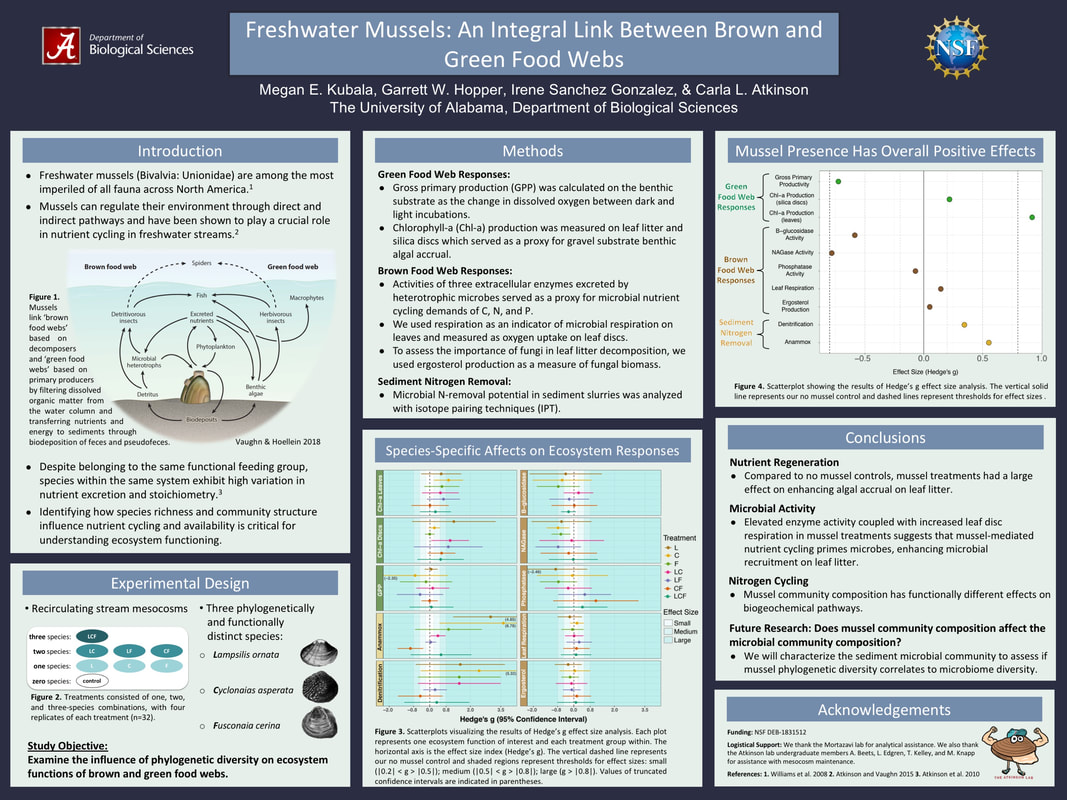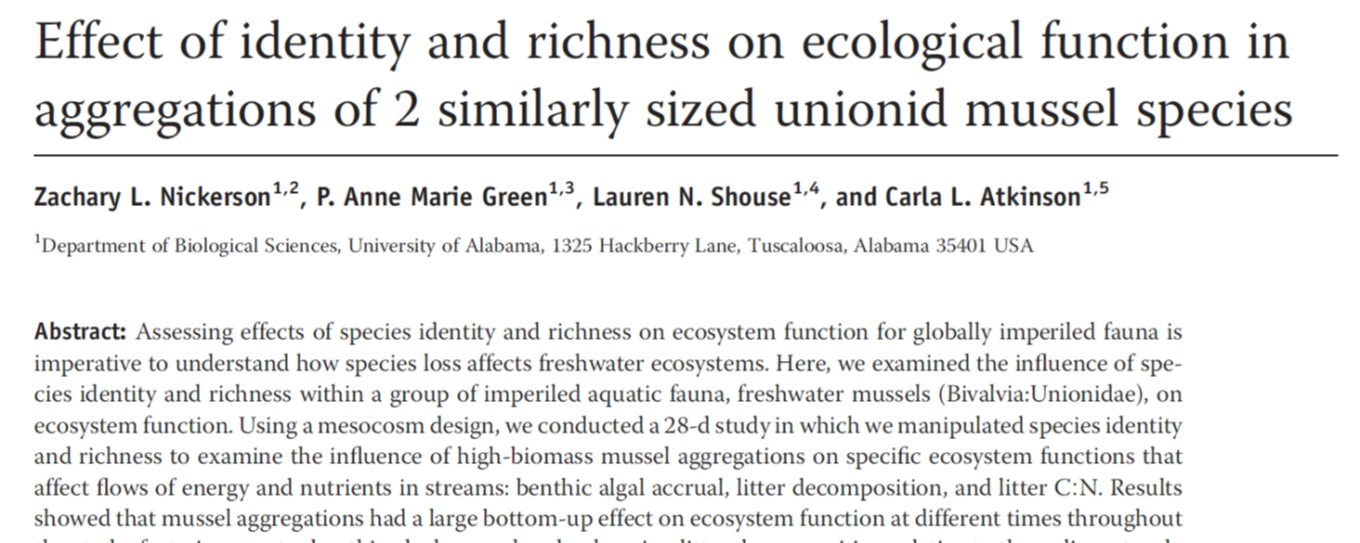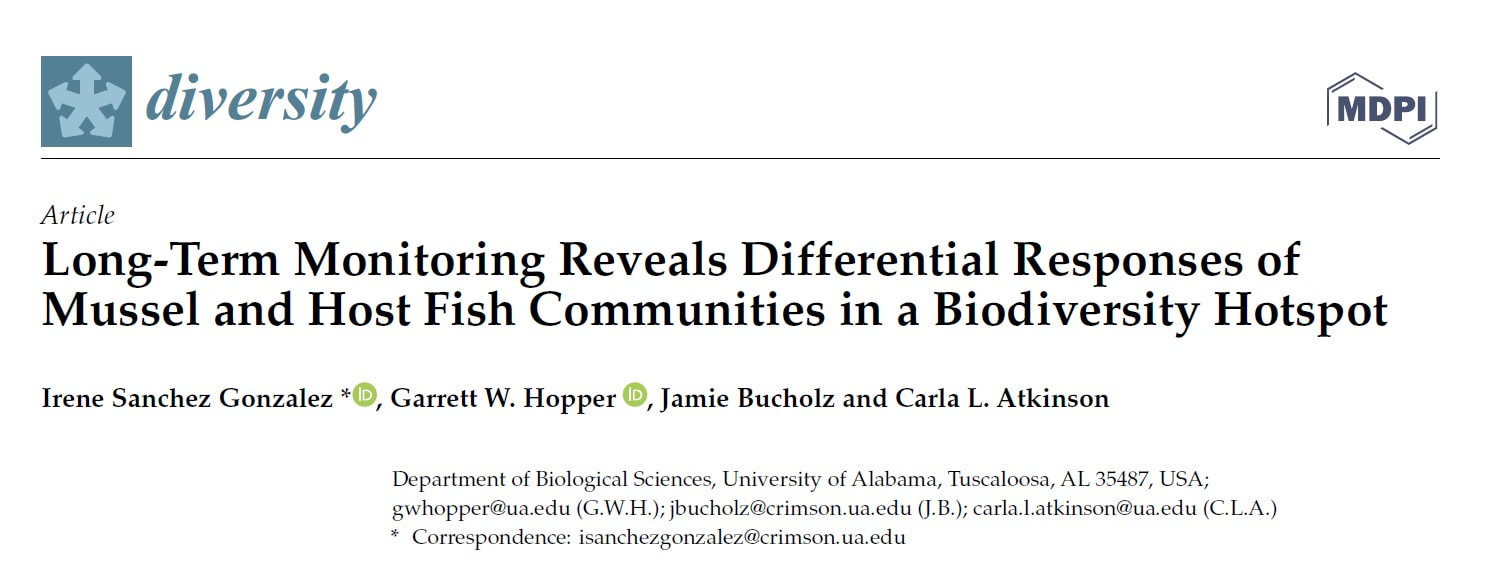|
Dan Knapp's research was published in Ecosphere! It was quite a feat as Dan sampled 11 species of larval anurans (tadpoles!) across their developmental stages. His work shows that their tissue stoichiometry varies due to their functional traits such as body size and developmental period. Further this data was scaled to examine their nutrient storage (C, N, and P) across four wetlands by combining the stage-specific tissue nutrient data with quantitative surveys of tadpole abundance, biomass, and life history stage.
Free full-text is available!
0 Comments
Megan Kubala (MS student) and Madison Knapp (wundergrad student) both received kudos this past week for their poster presentations at the Freshwater Mollusk Conservation Society (FMCS) and Undergraduate and Creative Activity Conference (URCA), respectively. Their posters are below. We even got to meet Big Al at the URCA award ceremony! Nice work to both of them. It was stiff competition out there. Also, want to recognize the other lab members that presented at FMCS and URCA.
The following lab members presented at FMCS: Garrett Hopper (12-minute talk), Irene Sanchez Gonzalez (5-minute lightning talk), Matt Lodato (poster), Taylor Kelley (poster), Jonathan Buchanan (poster), & lastly Dr. Atkinson (12-minute talk & a 5-minute lightning talk) These WUNDERGRADS also presented posters at URCA and did a fantastic job: Jonathan Buchanan & Taylor Kelly A collaborative manuscript was just published online at Freshwater Science! Zach Nickerson, a MS lab alumni, led up a mesocosm study with two undergraduate students, Anne Marie Green and Lauren Shouse, to examine how species identity and richness impacted energy flows in food webs. Overall, the study suggested that through niche complementarity, higher mussel species richness results in non-additive effects on ecosystem functions.
Two papers from the lab were recently published in Diversity and Functional Ecology!
Garrett Hopper, a postdoc in the lab, led the Functional Ecology paper to examine how freshwater mussels impact dissolved organic matter and nutrient fluxes. Our paper shows that mussels provide fluxes of labile energy and nutrients to stream microbial communities as they transform ingested particulate materials. Irene Sanchez Gonzalez, a PhD student in the lab, published the stark results from our 2019 survey of the Bogue Chitto Creek. This study highlights that while fish communities appear to be similar to historical data, mussels have sharply declined in abundance and diversity in this Strategic Habitat Unit. These differences in aquatic community responses may have to do with the sedentary nature of mussels in comparison to fish. Nice work team! |
Dr. Carla L. AtkinsonMy life is like a float trip! Archives
April 2023
Categories |








 RSS Feed
RSS Feed
